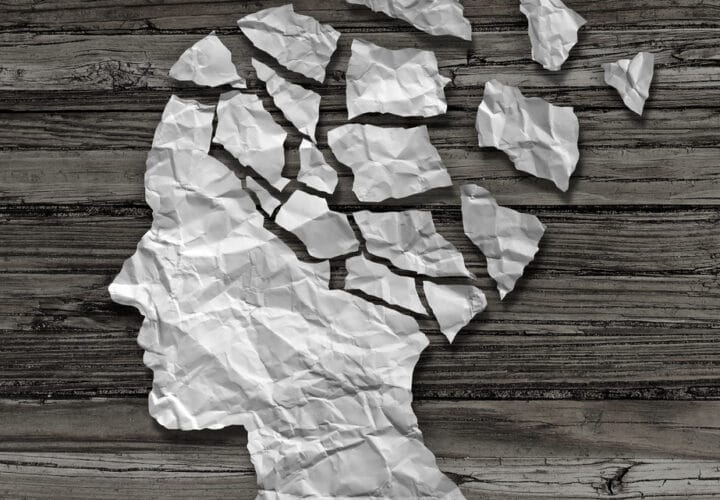November 20, 2017
Research into healthy brains has helped scientists identify where things may be going wrong in patients with Alzheimer’s. Dr. Beth Stevens, Ph.D., associate professor of neurology at Harvard Medical School, explains why her lab is focusing on microglia, immune cells in the central nervous system, to better understand cognitive decline in Alzheimer’s disease.
- Microglia are immune cells that make up the genes associated with Alzheimer’s, like TREM2
- Microglia are known as the ‘janitors’ of the brain in that they clean up plaque—but they’re also thought to be reason for inflammation
- Mouse models are being applied to humans to see if microglia causes synapse loss, which is what leads to cognitive decline
Being Patient: We think of Alzheimer’s as a disease of the deteriorating brain. How is your research (focused on the developing brain) connected to Alzheimer’s?
Beth Stevens: We started thinking about the possibility that in Alzheimer’s, and also other neurodegenerative diseases, that some of the same mechanisms that cause synapse loss in the healthy brain could be abnormally activated. We uncovered a role of this immune cell called ‘microglia.’ Because we’ve been studying this process pretty intensely in the developing brain, using mouse models, we’ve been using this information to test hypotheses about how this might be working in different Alzheimer’s models.
Being Patient: What do you know so far?
Beth Stevens: We know that there’s an inflammatory component in Alzheimer’s disease, and in one of the cells in particular that have been implicated in Alzheimer’s—microglia. These are our resident immune cells—cells that make up about 10 percent of the cells of our brain, and amazingly, we still know very little about how they work. But what we do know is that genes like CD33 and TREM2, that are linked to increased risk to Alzheimer’s, are expressed in these cells.
Being Patient: Does that mean that if you have those genes, you’re more likely to get Alzheimer’s?
Beth Stevens: These genes can increase risk in various levels. But if you look at what cells make up these genes, it’s these immune cells. We know that microglia are both good guys and bad guys in Alzheimer’s. One of the good things they do is they help eat or clear plaques. But at the same time, these cells can also release these signals that set off inflammation in the brain. One of the things scientists are doing, including us, is trying to understand better the biology of these cells—the idea is that there may be different states of microglia. If you can figure out what those are, you may be able to come up with ways to manipulate their ability to eat plaques independently from their ability to cause inflammation.
What we unexpectedly discovered a number of years ago in the developing brain was that microglia are one of the ways by which you ‘prune’ synapses. They’re actually nibbling at our synapses, but in development, this is a really good thing. So these extra synapses that we’re born with, they get pruned away. We started thinking: What if microglia eating of synapses was out of control? That led us to think about Alzheimer’s. We looked at several different mouse models of Alzheimer’s disease and found that even before a plaque formed, at the very earliest stages, microglia were misbehaving. They were eating too many synapses in brain regions like the hippocampus, which is important for memory. More importantly, if we block their ability to do this, genetically or with different antibodies, we could protect the synapses and some of the cognitive impairment in mice. This is exciting because it’s telling us that it’s one new mechanism by which synapses get lost, but also may provide new insight into how to protect those synapses.
Being Patient: Do we know why the microglia are misbehaving, so to speak?
Beth Stevens: We know a bit about that at least in the context of our mouse models. The plaques eventually do form in a lot of these Alzheimer’s mouse models, but we decided to look before any plaques happened. There’s evidence in humans that synapse loss can happen years before you start to get the cognitive impairment. In areas like the hippocampus, we found a pretty significant synapse loss before any plaques were around. That’s telling us that something was causing the synapse loss, and it turned out that one of the things that did that is beta-amyloid—not the form that makes plaques, but the secreted, oligomeric form. When we looked in these mouse brains, we showed that microglia were very angry in areas that were undergoing synapse loss. There were these vulnerable brain regions like the hippocampus where we saw microglia doing this. We don’t yet know what the signal is that triggers them to do this, although we suspect beta-amyloid is important in this process. One of the things we identified is this immune molecule called ‘complement’ that essentially stick to these synapses, tag it, and microglia have these receptors, and they basically recognize and eat the synapse. When we block that, we can protect the synapses.
Being Patient: What’s interesting is it seems you almost stumbled upon this accidentally by researching the developing brain.
Beth Stevens: Absolutely. There is no way I think we would have gone after it this way without our work in the developing brain. I think that brings a very important point up front: that to try to understand how something normally works, and especially if you really dig into it, it can really open up new insight into how things work in disease.
Being Patient: What does this mean moving toward a cure?
Beth Stevens: That’s one of the things that Cure Alzheimer’s Fund is helping us to do. We now need to try to think about how to translate these findings that we’ve learned in mouse models and see if it’s relevant to human Alzheimer’s disease, to really test the hypothesis that microglia and complement are causing this synapse loss in people. What we’re doing now is getting brain bank tissue from the very earliest stages, pre-clinical Alzheimer’s, where you can then look longitudinally and ask, just like we did in a mouse, “When and where do microglia change? When and where does synapse loss happen?” More importantly, “Do we see this sort of complement tagging going on,” because we’ve developed all the techniques to do this.
This interview has been edited for length and clarity.



